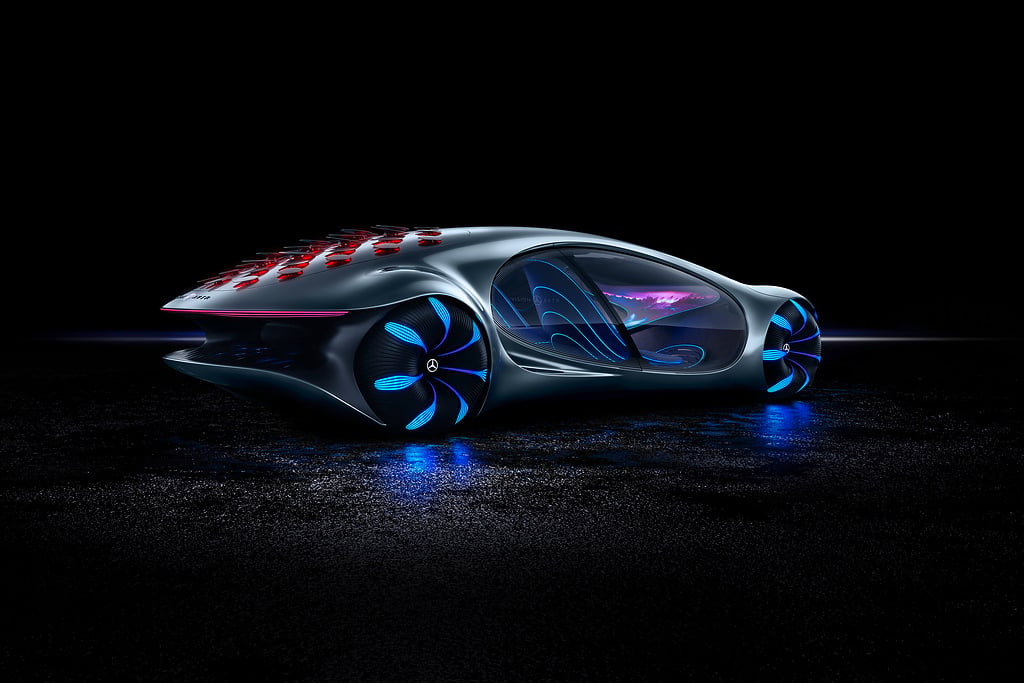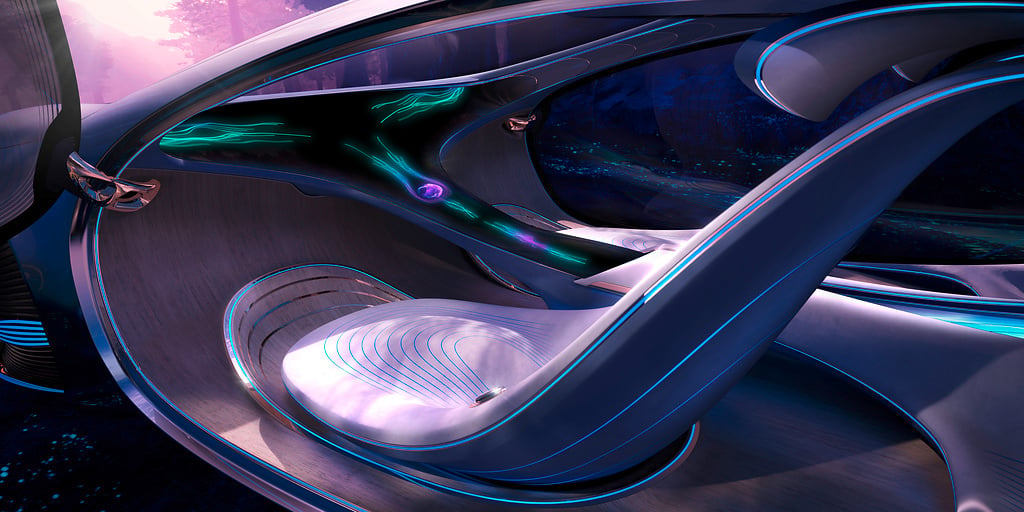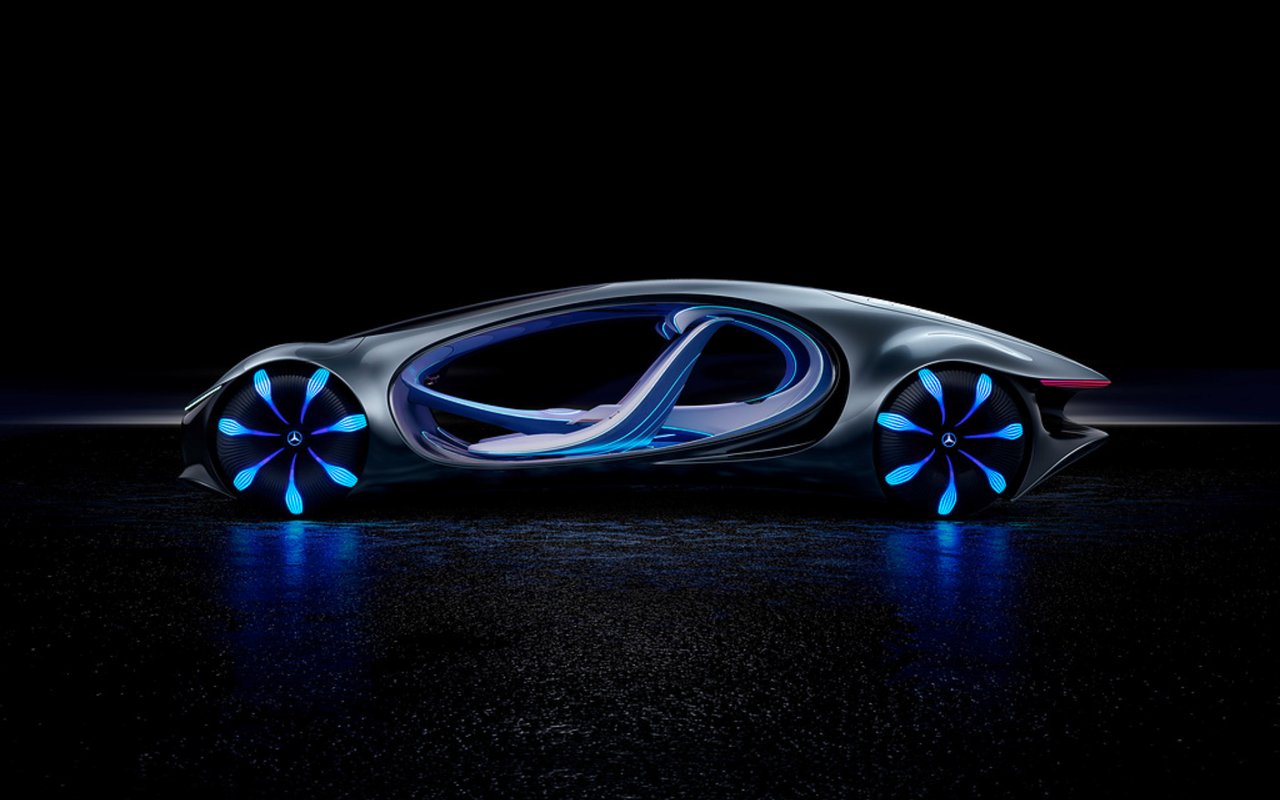Setting your GPS. Changing your radio station. Turning on the ambient lights. No matter how fancy or how advanced your car is, you still have to do something to perform these actions. The Mercedes-Benz Vision AVTR is aiming to change that, with its new concept car powered by thought.
Yes, the Vision AVTR is brain-powered.
“The biometric connection enables a completely new interaction between man, machine and nature in the autonomous-driving concept vehicle,” said Mercedes-Benz in a news release. The idea: You can operate many of the car’s functions without even lifting a finger. Literally.
Inspired by the movie Avatar, the car was first unveiled at CES 2020 in Las Vegas and showcased at IAA Mobility this month in Munich, where users were able to take part in a live experience of the user interface.
“Mercedes-Benz is setting another milestone in the merging of man and machine with the research and development of brain-computer interface applications in cars. BCI technology has the potential to further enhance driving comfort in the future, for example,” said Britta Seeger, Member of the Board of Management of Daimler AG and Mercedes-Benz AG, responsible for Sales, in a news release. “Mercedes-Benz has always pioneered intelligent, innovative solutions to provide our customers with the best product and service experience. BCI technology works completely independently of speech and touch. This opens up revolutionary possibilities for intuitive interaction with the vehicle.”

The VISION AVTR uses award-winning and proprietary brain-computer interface (BCI) technology from neurotechnology startup NextMind to “allows users to take control of the car just by using their thoughts,” according to a NextMind news release. “It is the world’s first automotive integration of a brain-sensing wearable.”
The driver wears a BCI device with wearable electrodes on their head; their brain waves trigger the projection of light points on the car’s digital dashboard. The brain reacts to the visual stimuli, and when the driver focuses on a specific point, the desired function is initiated.

BCI isn’t new technology, but it is evolving every day. Up to this point, BCIs—and their high-tech cousin, brain–machine interfaces (BMIs)—have largely been used in a medical context to help disabled or paralyzed people regain movement, control robotic protheses and wheelchairs, and use computers. A recent study at Stanford University on a patient with a spinal cord injury created handwritten communication on a computer at a record rate.
The patient imagined the sentences at more than twice the speed as prior experiments, although this BCI used an implanted electrode in the brain, not a wearable.
The VISION AVTR is certainly the most high-profile example of BCI to date—although Elon Musk’s Neuralink company, which is looking to develop an implantable Fitbit-like device in the brain, is one to watch.
Design and Driving
The VISION AVTR’s aforementioned digital dashboard takes the place of the more conventional elements in the car’s interior; absent is a steering wheel or any buttons and dials. In the center console is a multifunctional control element powered by the user’s heart rate. Place your hand on the control to bring it to life; raise your hand to project a menu on your palm, where you can then choose the desired functionality.Sustainable materials include vegan DINAMICA® leather and fast-growing Karuun® (rattan). The back shell of the seat and the sky feature color-changing fabric that shifts from dark to subtle blue, depending on the light.
The stretched “one-bow” design of the car features prominent lights in the front, rear, and around the wheels, as well as a huge transparent door on either side of the car. Those wheels have been described by Gorden Wagener, Daimler Group’s chief design officer, as “animal paws” because they enable the VISION AVTR to “crab walk,” or move sideways by approximately 30 degrees.
The vehicle will have a combined engine power of more than 350kW, all-wheel drive, and “exponentially high” battery capacity with a range of more than 435 miles and full rechargability in less than 15 minutes.




